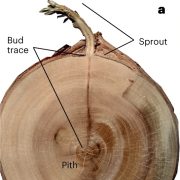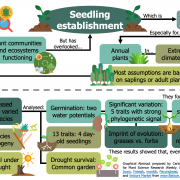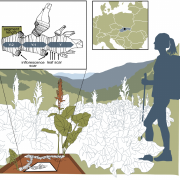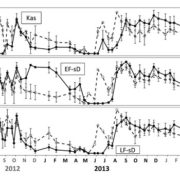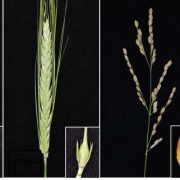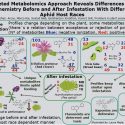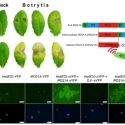Seedling traits predict drought-induced mortality linked to diversity loss (PNAS)
 When trying to understand the repercussions climate change will have on future plant communities, trait-based approaches provide valuable insight. Unfortunately, many trait-based studies focus only on the above-ground traits of un-stressed adult plants, ignoring the critical seedling stage. Harrison and LaForgia measured above- and below-ground traits of several native wildflowers and compared seedling mortality between plots that received watering throughout the dry season and plots that remained unwatered, to determine the relationship between traits and drought-related mortality. The strongest predictor of avoiding drought-related mortality was longer seedling root length, followed by a cluster of correlated traits including large seeds, low seedling-specific leaf area, and short seedling height. They found little evidence supporting possible adaptive plasticity in the traits measured, and in fact found that the plants with lower mortality tended to have more stable traits throughout periods of stress. This study highlights the importance of considering appropriate life stages and plant structures when using traits to predict the impacts of climate on a community. (Summary by Rebecca Hayes) Proc. Natl. Acad. Sci. USA 10.1073/pnas.1818543116
When trying to understand the repercussions climate change will have on future plant communities, trait-based approaches provide valuable insight. Unfortunately, many trait-based studies focus only on the above-ground traits of un-stressed adult plants, ignoring the critical seedling stage. Harrison and LaForgia measured above- and below-ground traits of several native wildflowers and compared seedling mortality between plots that received watering throughout the dry season and plots that remained unwatered, to determine the relationship between traits and drought-related mortality. The strongest predictor of avoiding drought-related mortality was longer seedling root length, followed by a cluster of correlated traits including large seeds, low seedling-specific leaf area, and short seedling height. They found little evidence supporting possible adaptive plasticity in the traits measured, and in fact found that the plants with lower mortality tended to have more stable traits throughout periods of stress. This study highlights the importance of considering appropriate life stages and plant structures when using traits to predict the impacts of climate on a community. (Summary by Rebecca Hayes) Proc. Natl. Acad. Sci. USA 10.1073/pnas.1818543116



